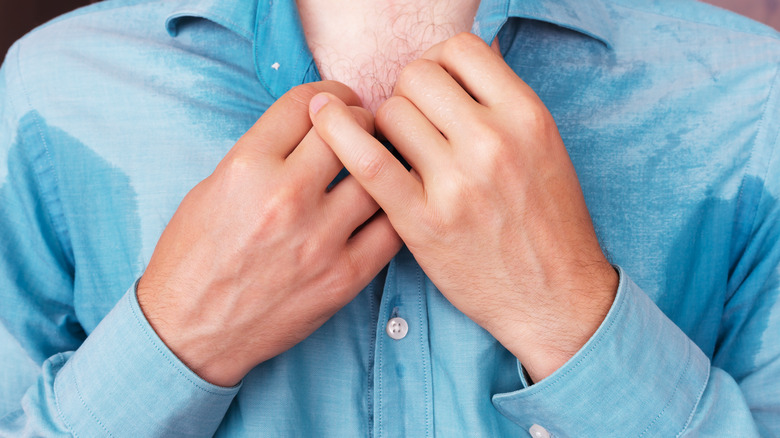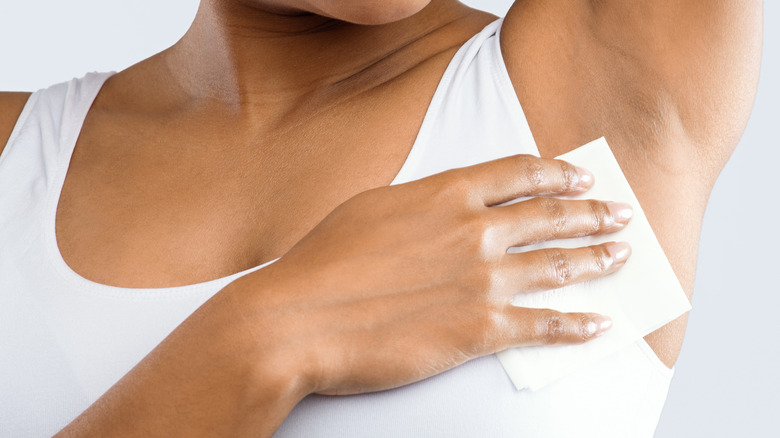Here's What's Really Causing Your Excessive Sweating
Sweating enables our body to cool down the surface of our skin when overheated (via Department of Health, State Government of Victoria, Australia). Physical activity, stress, fever, or hot weather can easily trigger our sweat glands, but some of us may find that we sweat more than others, even when not prompted by outside factors. Those who experience excessive sweating may frequently change their clothes or keep a towel close by throughout the day (via University of Michigan Health).
Excessive sweating that occurs as part of a health condition is referred to as secondary hyperhidrosis and may be due to hyperthyroidism, leukemia, infection, menopause, or diabetic hypoglycemia, amongst other conditions (via the Mayo Clinic). On the other hand, heavy sweating that occurs for no apparent reason is called primary hyperhidrosis. Approximately 2-5% of the U.S. population is estimated to have hyperhidrosis and the condition is thought to be genetic (via the Cleveland Clinic). Those with hyperhidrosis do not have more sweat glands than average — their sympathetic nervous system gets kicked into overdrive and produces an excess of sweat (via Johns Hopkins Medicine).
Treatment and management of hyperhidrosis symptoms
Hyperhidrosis most often affects the palms, underarms, face, scalp, and feet (via Johns Hopkins Medicine). The condition may begin in childhood and extend into adulthood. It is often characterized by sweating that occurs only during the daytime, regardless of temperature or activity level (via Cedars-Sinai). Areas of the body most prone to sweating may be soft, appear pink or white in color, or may be scaly or cracked, depending on the severity of the condition.
Be sure to speak with your doctor if you believe you may be experiencing symptoms of hyperhidrosis to rule out any pre-existing medical conditions and to explore treatment options. Prescription antiperspirants, medications, or injections may be recommended (via Cedars-Sinai). If sweating is accompanied by a skin infection, night sweats, chest pain, accelerated heartbeat, or shortness of breath, you will also want to speak to your healthcare provider right away.
When it comes to at-home management of symptoms, Cedars-Sinai suggests daily bathing with antibacterial soap, wearing cotton socks, and the use of dress shields, which can be worn as sweat-absorbent pads in the underarm area. In addition, keeping a journal can help keep track of any potential triggers, such as caffeine, stress, or spicy food.


